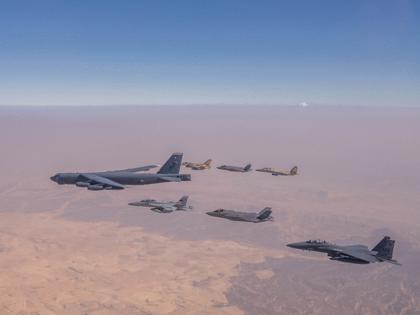How Tampa's CentCom was at the heart of Trump's Iran bombing mission
Published in News & Features
Tampa was at the heart of the secret bombing campaign that hit three Iranian nuclear facilities early Saturday morning.
Home to MacDill Air Force base and U.S. Central Command, CentCom, military officials in Tampa directed a precision strike under President Donald Trump’s orders to destroy or degrade Iran’s nuclear program.
Defense Secretary Pete Hegseth, along with Gen. Dan Caine, chairman of the Joint Chiefs of Staff, outlined the mission, called “Operation Midnight Hammer” on Sunday at a Pentagon news briefing.
Caine cited Tampa’s CentCom along with Gen. Michael “Erik” Kurilla, the influential commander, as key players in the attack. CentCom is one of 11 commands of the U.S. Department of Defense — one that has played an outsized role in the country’s wars and marquee military operations since 9/11. It has been based at MacDill since it was created in 1983.
CentCom is responsible for military operations in the Middle East, Central and South Asia and the waterways surrounding those regions, according to the Department of Defense. CentCom’s area of responsibility encompasses 21 countries, including Iran, Israel, Syria and Afghanistan.
Kurilla, a four-star Army general, has been commander of CentCom since April 2022. He traveled to Israel in February to meet with the chief of the Israeli Defense Force and others to discuss how both countries’ militaries could work more closely.
In January, he emphasized the importance of curtailing Iran’s growing nuclear capacity when the country had already been weakened by Israel.
“We now have an unprecedented opportunity to advance the vision of a prosperous and integrated Middle East in which U.S. national interests are advanced and Iran’s violent attempts to upend this peaceful order are defeated,” Kurilla told senators at a U.S. Senate Armed Services committee congressional hearing.
Just over six months later, Operation Midnight Hammer launched.
The mission involved surprise decoy elements, with a group of B-2 Spirit bombers, a type of stealth bomber plane, taking off from Whiteman Air Force base in Missouri. Some of those bombers flew west into the Pacific as a decoy, while seven others proceeded east to Iran with minimal communication, Caine said.
It was “a deception effort known only to an extremely small number of planners and key leaders here in Washington and in Tampa,” he said.
Throughout the 18-hour flight into Iranian airspace, several refuelings were required, Caine said. Because of their small size, stealth fighter planes require multiple gas-ups during longer missions in the air. They are replenished by larger planes, which carry massive gas tanks of gas. One type of this plane, the KC-135 Stratotanker, is based at MacDill.
It’s unclear whether any of the refueling planes based in Tampa were involved in the attack. Officials with CentCom, when asked by the Tampa Bay Times about this, said, “We have nothing to provide.”
In addition to the aerial operation, a submarine also under CentCom command launched two dozen Tomahawk land cruise missiles against one of the Iranian nuclear sites, launched last to maintain an element of surprise, Caine said.
Kurilla has already taken precautions to keep U.S. troops in the areas around Iran safe, Caine said.
Well before the strike, Kurilla “elevated force protection measures in the region, especially in Iraq and Syria and the Gulf,” Caine said. “Our forces remain on high alert and are fully posted to respond to Iranian retaliation or proxy attacks.”
In a news conference Sunday in Istanbul, Iran’s foreign minister, Abbas Araghchi, said Iran “condemns in the strongest terms” the U.S. attack. He said the U.S. of violated international law and said Iran reserved “all options to act in self-defense.”
©2025 Tampa Bay Times. Visit at tampabay.com. Distributed by Tribune Content Agency, LLC.







Comments